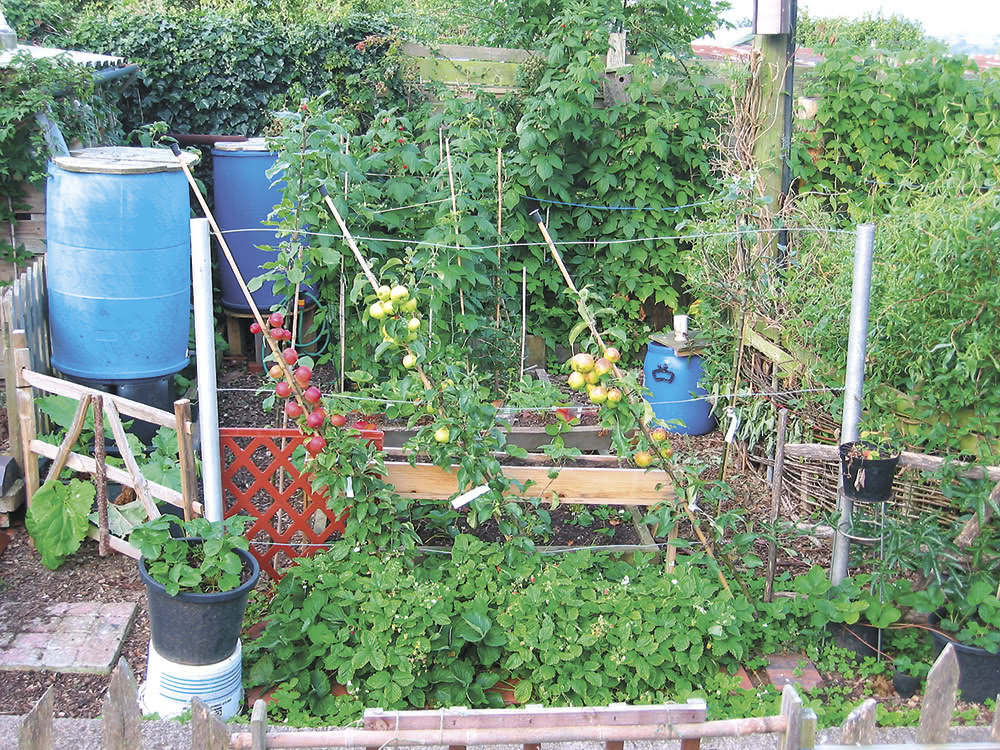Permaculture is a term and agricultural practice created by Bill Mollison and David Holmgren in 1978 as a portmanteau of permanent agriculture and permanent culture, which gets at the multi-dimensional nature of the practice. Permaculture can be defined as an agricultural practice “that integrates land, resources, people and the environment through mutually beneficial synergies” (Permaculture Research Institute). The original canon of permaculture literature is called Permaculture: A Designer’s Manual (Mollison, 1988) and another influential (and more recent) piece of work is Permaculture: Principles and Pathways Beyond Sustainability (Holmgren, 2002). Both of these books have shaped the development of permaculture since its conception back in the 1970s. The movement has evolved through three major phases that were rolled out alongside the two essential permaculture books.
Phase I
Emphasizes the importance of replacing annual crops with perennials
Phase II
Emphasizes the “harmonious integration of landscape and people providing their food, energy, shelter and other material and non-material needs in a sustainable way” (Mollison, 2014)
Phase III
Moves permaculture beyond just an agricultural strategy and into design principles that are relevant in many other aspects of life

(http://midcoastpermaculture.com/4-ethics-of-permaculture/)
Permaculture is built upon the foundation of four primary principles, which can be seen in the graphic above. These ethics are care for the earth, care for other people, limits to population and consumption, and distribution of surplus. Since the conceptualization of permaculture as a practice back in 1978, many definitions have been espoused over the years. The one thing they all have in common is recognizing the holistic nature of the movement, along with the importance of harmony as a driving force behind permaculture success. Permaculture is all about variety and diversification projects. It is also essential to respond to the needs of the land through careful observation instead of imposing agricultural practices that may not make the most sense in that particular plot of land. Essentially, the philosophy of permaculture can be summed up as working with, instead of against, land.
Permaculture Design Principles:

(https://masonacampbell.com/permaculture-principles-language-independent-handbook)
| Permaculture design principles from Rising to the Challenge (Swennerfelt 2016) |
| Observe and interact: By taking time to engage with nature we can design solutions that suit our particular situation. |
| Catch and store energy: By developing systems that collect resources at peak abundance, we can use them in times of need.Obtain a yield: Ensure that you are getting truly useful rewards as part of the work that you are doing, |
| Obtain a yield: Ensure that you are getting truly useful rewards as part of the work that you are doing, |
| Apply self-regulation and accept feedback: We need to discourage inappropriate activity to ensure that systems can continue to function well. |
| Use and value renewable resources and services: Make the best use of nature’s abundance to reduce our consumptive behavior and dependence on non-renewable resources. |
| Produce no waste: By valuing and making use of all the resources that are available to us, nothing goes to waste. |
| Integrate rather than segregate: By putting the right things in the right place, relationships develop between those things and they work together to support each other. |
| Design from patterns to details: By stepping back, we can observe patterns in nature and society. These can form the backbone of our designs, with the details filled in as we go. |
| Use small and slow solutions: Small and slow systems are easier to maintain than big ones, making better use of local resources and producing more sustainable outcomes. |
| Use and value diversity: Diversity reduces vulnerability to a variety of threats and takes advantage of the unique nature of the environment in which it resides. |
| Use edges and value the marginal: The interface between things is where the most interesting events take place. These are often the most valuable, diverse and productive elements in the system. |
| Creatively use and respond to change: We can have a positive impact on inevitable change by carefully observing, and then intervening at the right time. |

(https://www.permaculturenews.org/what-is-permaculture/)
There are many historical and present-day examples of successful permaculture practices. One historical lesson comes from the Loess Plateau in China. This region became a desert after generations of farming using unsustainable practices. The use of permaculture practices completely restored the area. As we begin to move away from the destructive growth economy model, permaculture projects will begin to become more and more common and widespread. Already there are small-scale projects sprouting up all around the world including in city flats and window boxes, suburban gardens, community spaces, and educational establishments.
| Local Examples: Yestermorrow: https://yestermorrow.org/learn/courses/permaculture-design-certification New Perennials Project: at the Knoll (https://www.newperennials.org) |

(https://www.permaculture.co.uk/what-is-permaculture/)
Even though it is a relatively young practice, permaculture has already imparted many important lessons. It has emphasized the importance of organic agriculture and perennial crops. It has shown how a polyculture—multiple plants growing in close proximity—is the ideal agricultural strategy. It has highlighted the importance of reducing use of machinery, transport, and fossil-fuel dependent inputs. It has proven that agriculture must surround and interpenetrate settlements to allow for sustainable food transport methods. It has affirmed the importance of diverse and labor-intensive agricultural jobs and the benefits of building structures that retain and use water in the landscape. Finally, it has shown the importance of closed-loop systems that provide for their own energy needs.
Holmgren, D. (2017). Permaculture : principles & pathways beyond sustainability. Hepburn, Victoria Melliodora Publishing.
Mollison, B., & Jeeves, A. (2014). Permaculture : a designers’ manual. Sisters Creek, Tasmania Tagari Publications.
Swennerfelt, Ruah. 2016. Rising to the Challenge: The Transition Movement and People of Faith. Produccicones de La Hamaca.
What is Permaculture ? (n.d.). The Permaculture Research Institute. Retrieved April 27, 2023, from https://www.permaculturenews.org/what-is-permaculture/#:~:text=Permaculture%20integrates%20land%2C%20resources%2C%20people